Make sure to join my list for Weekly Tips and Recipes to Your Inbox
14 Comprehensive Vegetable Companion Planting Charts for Raised Beds
When I started planning my raised bed garden, I had one big goal: growing more vegetables in a limited space. Sounds simple, right? But if you’ve ever gone down the rabbit hole of gardening research, you’ll know just how fast that clarity can turn into chaos.
Especially once I discovered companion planting charts. Every chart promised to help me grow more efficiently, keep pests away, and build healthier soil, but they all said slightly different things. My head was spinning.
Armed with two tall Birdies beds (8ft long, 29″ high), I had dreams of lush tomatoes and pollinator flowers spilling over the edges. I used the hugelkultur method using logs, sticks, and cardboard to fill the lower half, and planned to top it with a homemade mix of compost, mushroom mix, and garden soil.

But then the doubts crept in. Should I add peat moss? Pumice? Coco coir? Would my choices ruin everything? And more urgently: how could I actually organize these plants together without wasting space or attracting every bug in my neighborhood?
That’s when I circled back to the companion planting charts. They helped me stop overthinking and start acting. I used them to create a layout that grouped compatible plants by soil needs and structure, tall tomatoes trellised in the back, basil and nasturtiums tucked at their feet, and leafy greens filling in the shady backyard.
I added pollinator flowers like marigolds and borage to the edges, not just for beauty, but to support the whole ecosystem. With this chart-based plan, I’m confident I’ll maximize the backyard in my raised beds, nurture my soil, and grow more food for my big family, all without relying on pesticides or expensive soil mixes.
Turns out, a simple chart can be a powerful tool.
14. Tomato Companion Planting Charts for Raised Beds
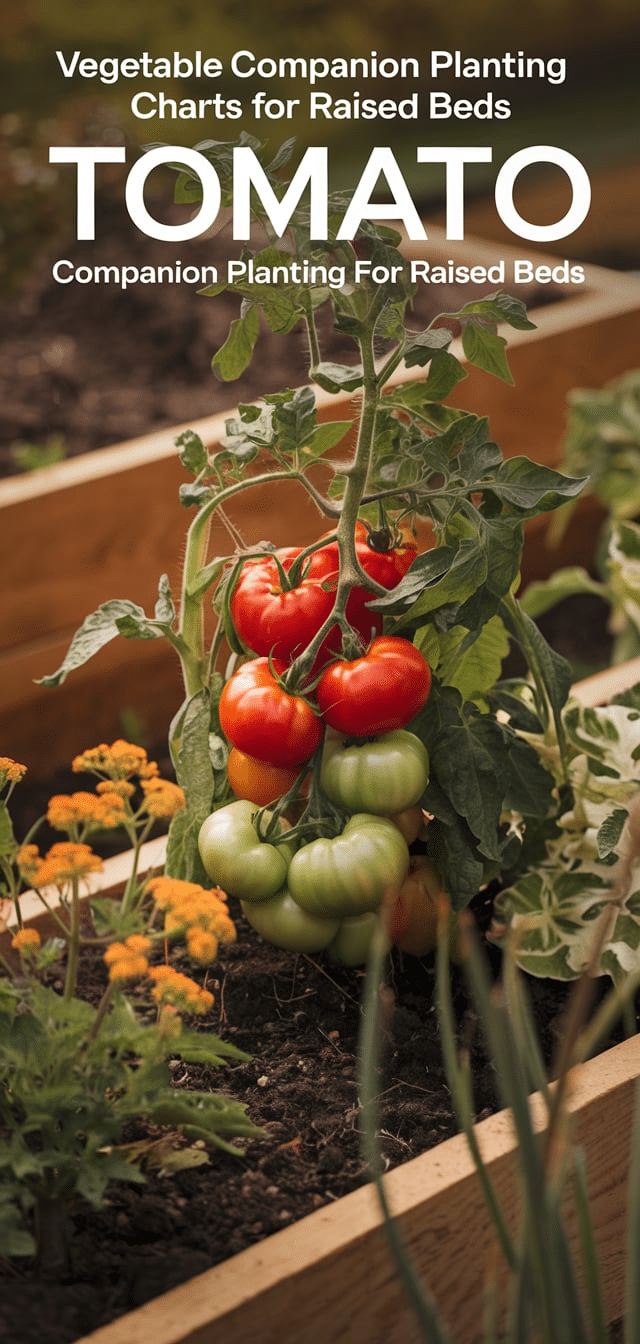
| Companion Plants | Benefits | Avoid Planting With |
|---|---|---|
| Basil | Repels thrips, enhances flavor | Corn, cabbage, fennel |
| Marigold | Deters nematodes | |
| Garlic | Repels spider mites | |
| Lettuce | Uses lower vertical space | |
| Carrots | Mutual root growth benefit |
Tip: Keep tomatoes staked to prevent overshadowing low growers.
13. Carrot Companion Planting Charts for Raised Beds
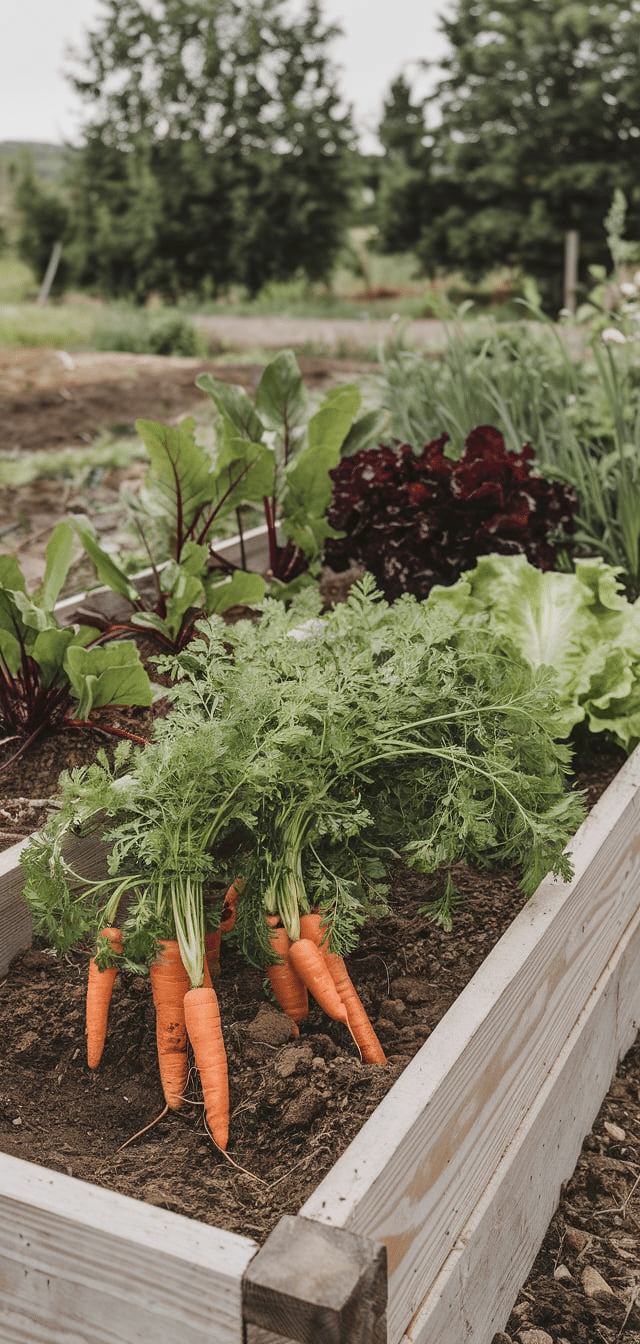
| Companion Plants | Benefits | Avoid Planting With |
|---|---|---|
| Onions | Repels carrot flies | Dill |
| Leeks | Enhance growth | Parsnips |
| Radishes | Loosen soil for better root spread | |
| Tomatoes | Provide shade |
Tip: Sow radishes between carrots to break up crusty topsoil.
12. Lettuce Companion Planting Charts for Raised Beds
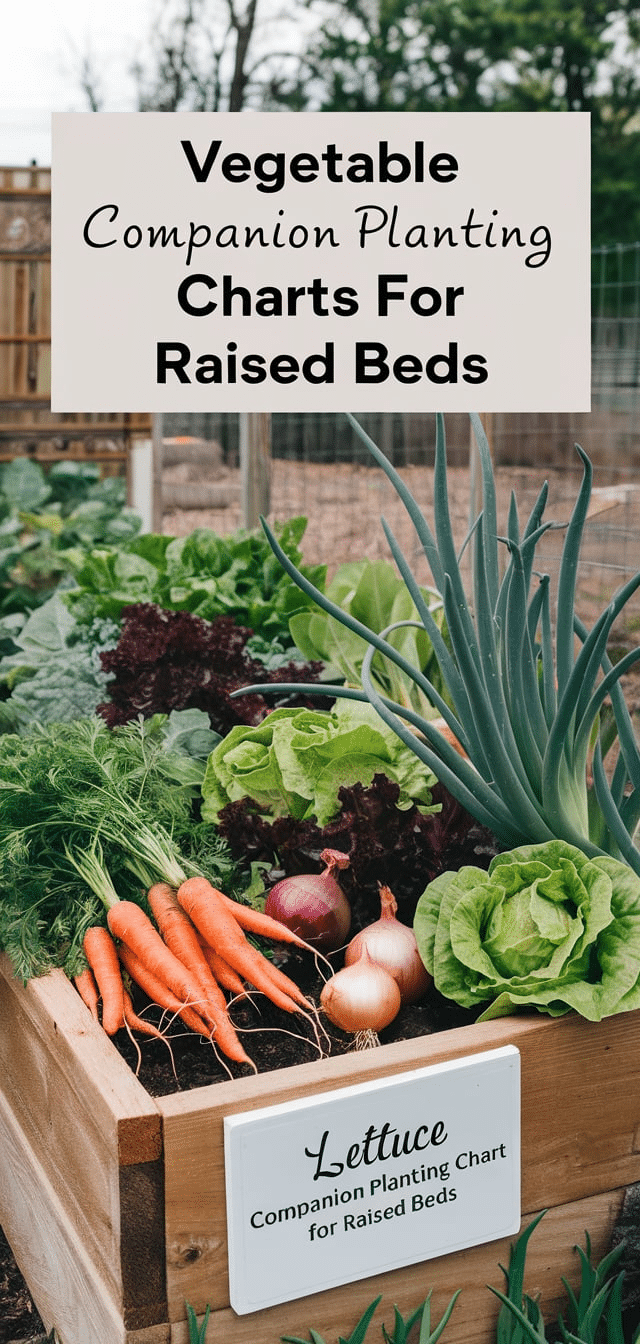
| Companion Plants | Benefits | Avoid Planting With |
|---|---|---|
| Chives | Repel aphids | Parsley |
| Strawberries | Provide ground cover | Celery (competes for nutrients) |
| Radishes | Fast harvest; frees up space | |
| Carrots | Shared shallow root zones |
Tip: Position lettuce in partial shade under taller crops like tomatoes or beans.
11. Cucumber Companion Planting Charts for Raised Beds
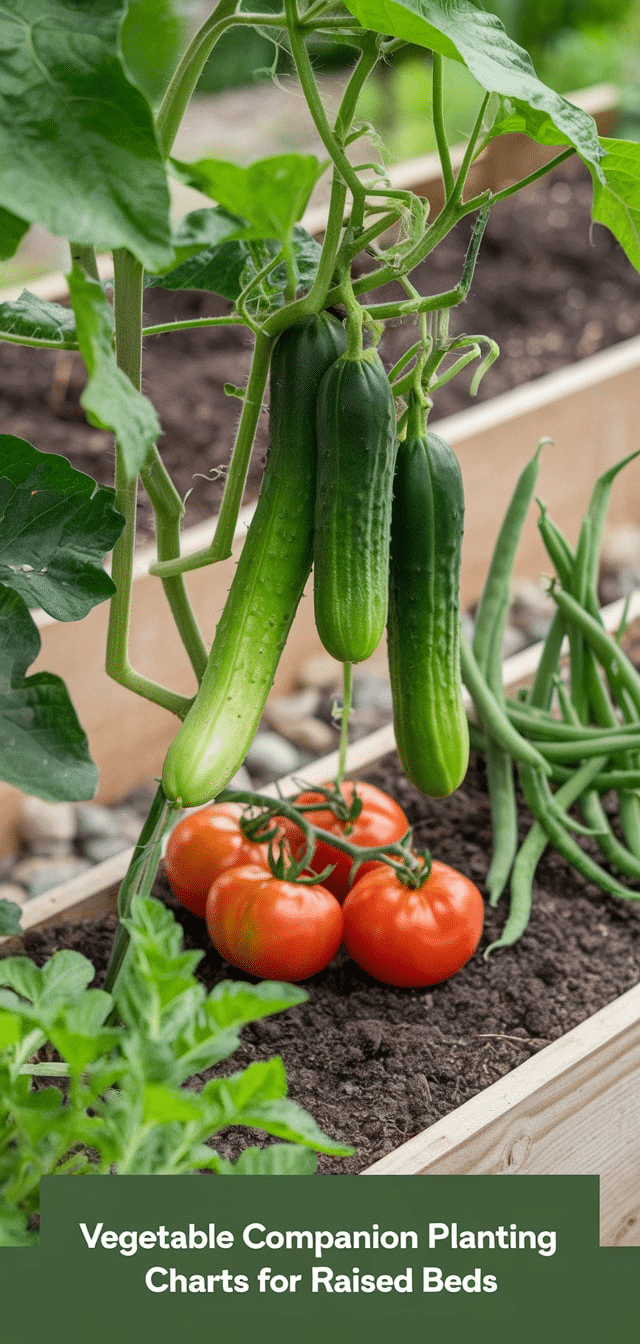
| Companion Plants | Benefits | Avoid Planting With |
|---|---|---|
| Nasturtiums | Attract aphids away from cucumbers | Sage, potatoes |
| Beans | Nitrogen fixers | Melons (resource competition) |
| Dill | Enhances growth and taste | |
| Sunflowers | Offer climbing support |
Tip: Train cucumbers vertically to maximize raised bed space.
10. Peppers Companion Planting Charts for Raised Beds
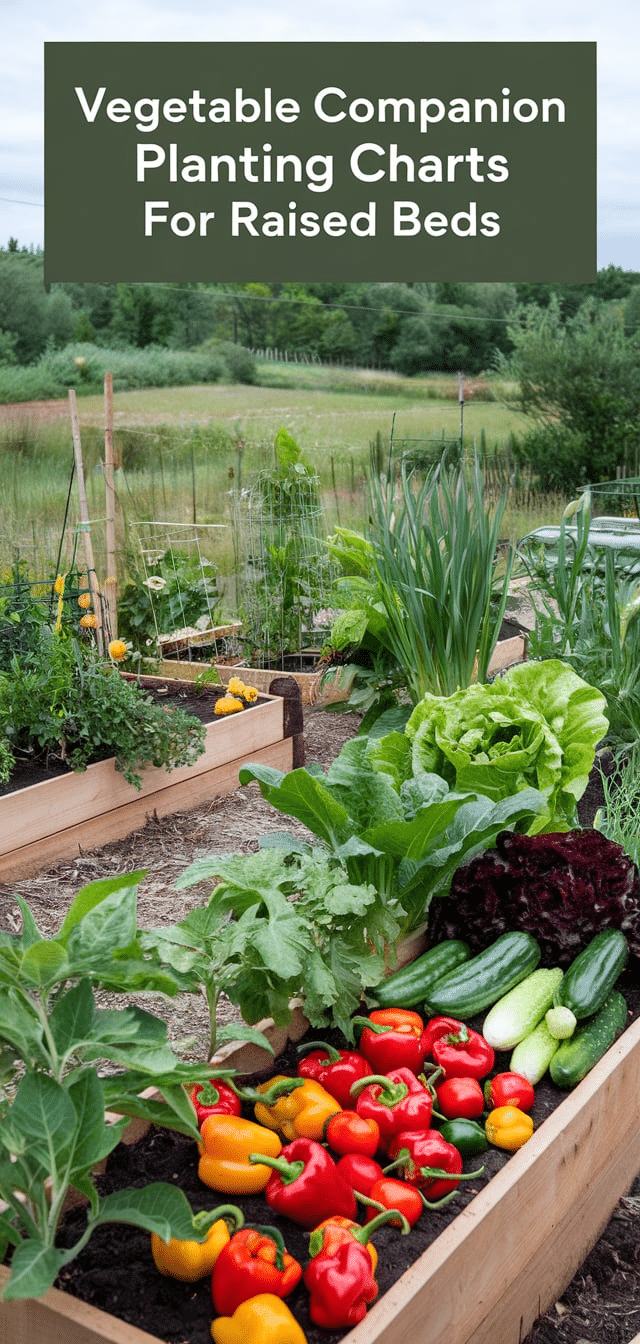
| Companion Plants | Benefits | Avoid Planting With |
|---|---|---|
| Basil | Repels thrips, improves growth | Beans |
| Onions | Pest deterrent | Kohlrabi |
| Spinach | Grows well in shaded corners |
Tip: Use mulch to retain warmth and moisture around pepper roots.
9. Onion Companion Planting Charts for Raised Beds
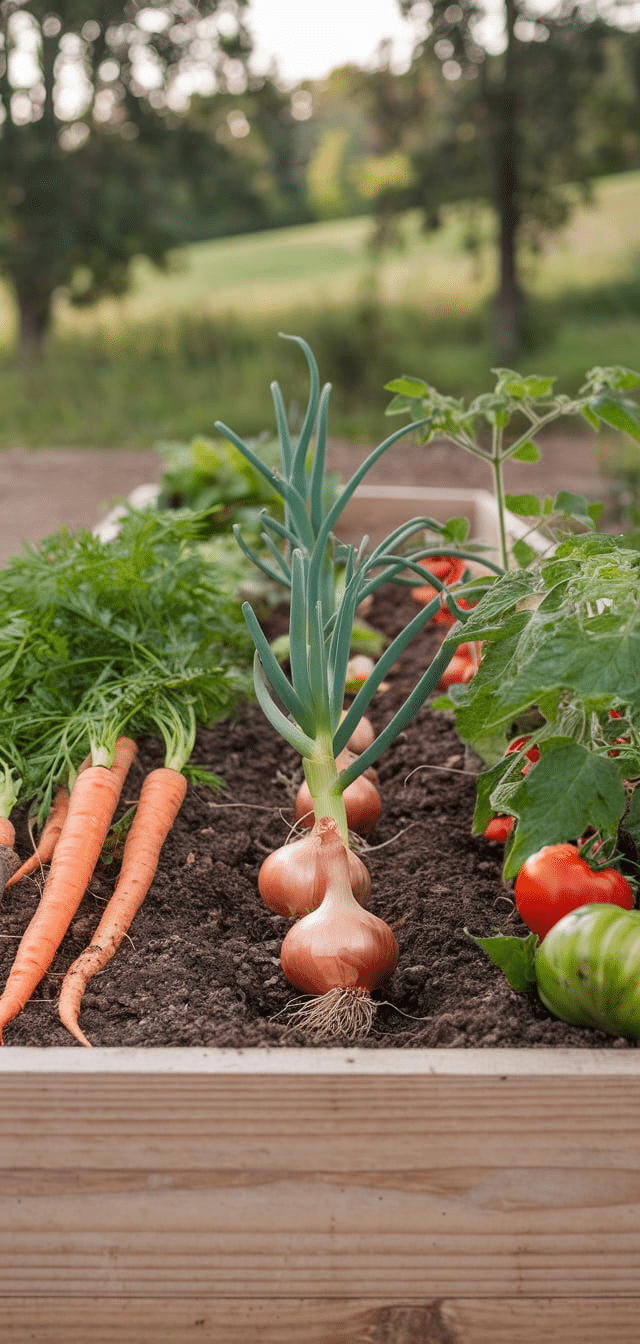
| Companion Plants | Benefits | Avoid Planting With |
|---|---|---|
| Carrots | Repels carrot flies | Peas |
| Beets | Improved root development | Beans |
| Lettuce | No competition for nutrients |
Tip: Do not plant onions near legumes—they hinder each other’s growth.
8. Beans Companion Planting Charts for Raised Beds
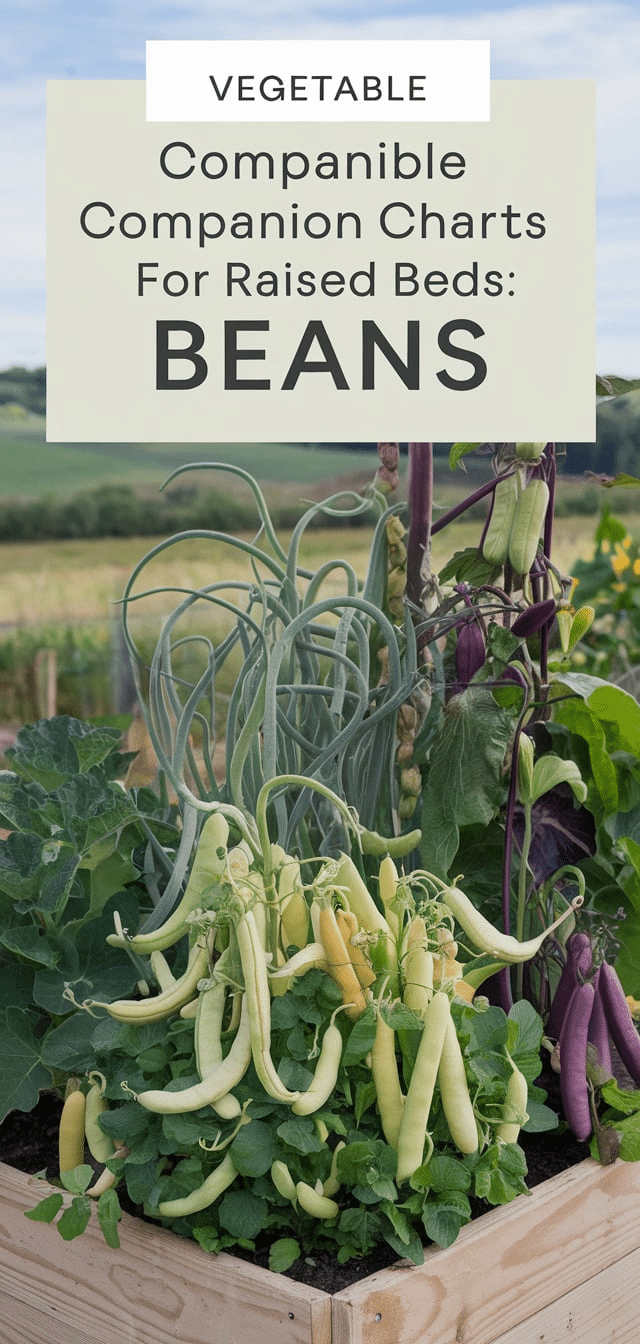
| Companion Plants | Benefits | Avoid Planting With |
|---|---|---|
| Corn | Natural trellis for vines | Onions, garlic |
| Radishes | Deter beetles | Fennel |
| Marigold | Repels nematodes |
Tip: Rotate beans yearly to prevent soil-borne diseases.
7. Spinach Companion Planting Charts for Raised Beds
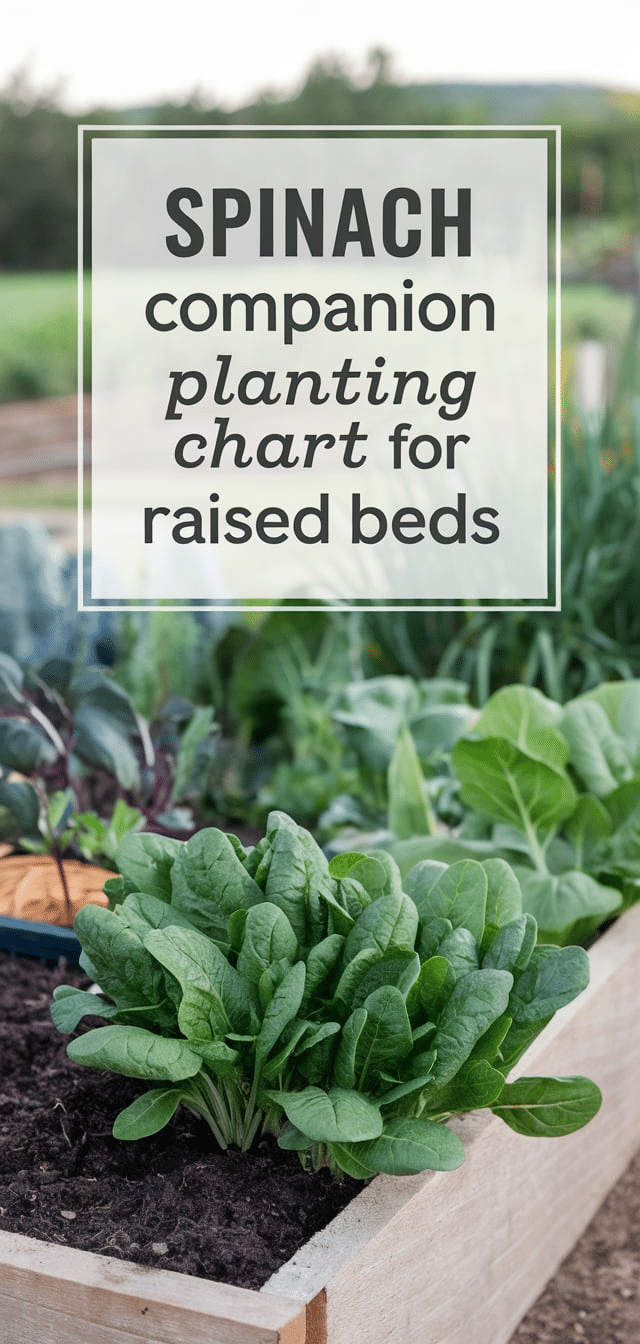
| Companion Plants | Benefits | Avoid Planting With |
|---|---|---|
| Strawberries | Provide shade, moisture | Potatoes |
| Peas | Nitrogen-fixing for leafy growth | |
| Radishes | Help break soil crust |
Tip: Sow spinach early, a cool-season crop that bolts in heat.
6. Zucchini Companion Planting Chart for Raised Beds
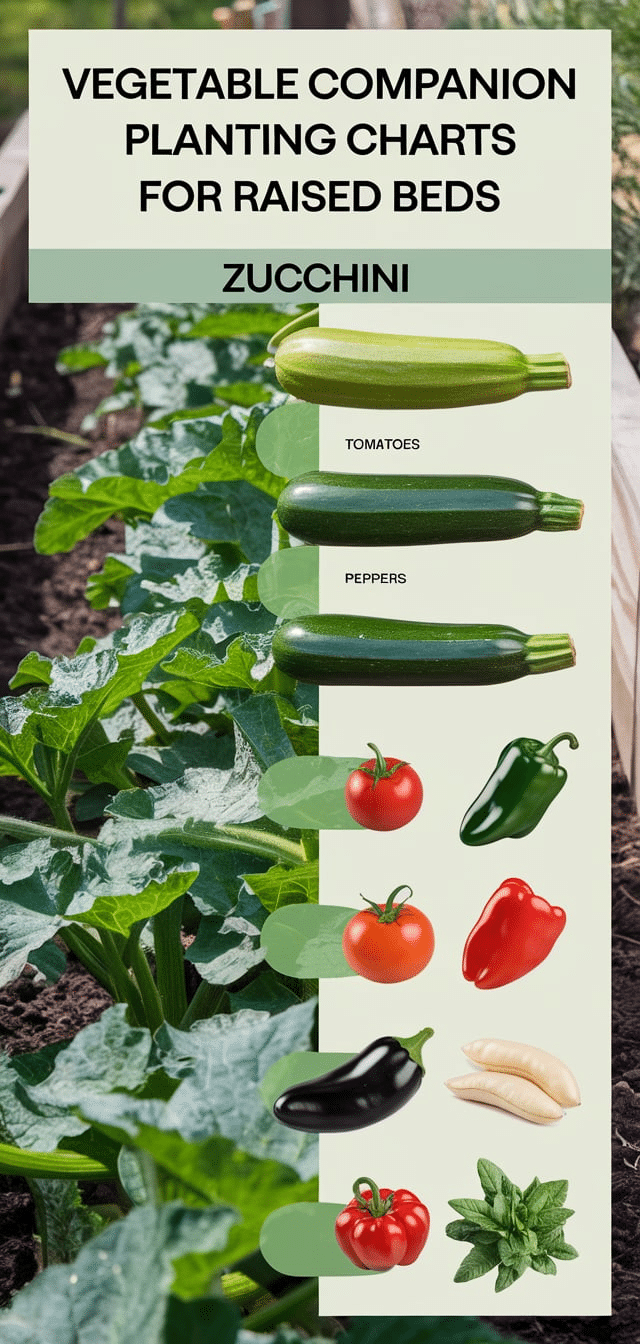
| Companion Plants | Benefits | Avoid Planting With |
|---|---|---|
| Nasturtiums | Attract pests away from zucchini | Potatoes |
| Corn | Provides partial shade | Cucumbers |
| Borage | Attracts pollinators |
Tip: Space zucchini well to prevent mildew in confined beds.
5. Radish Companion Planting Chart for Raised Beds
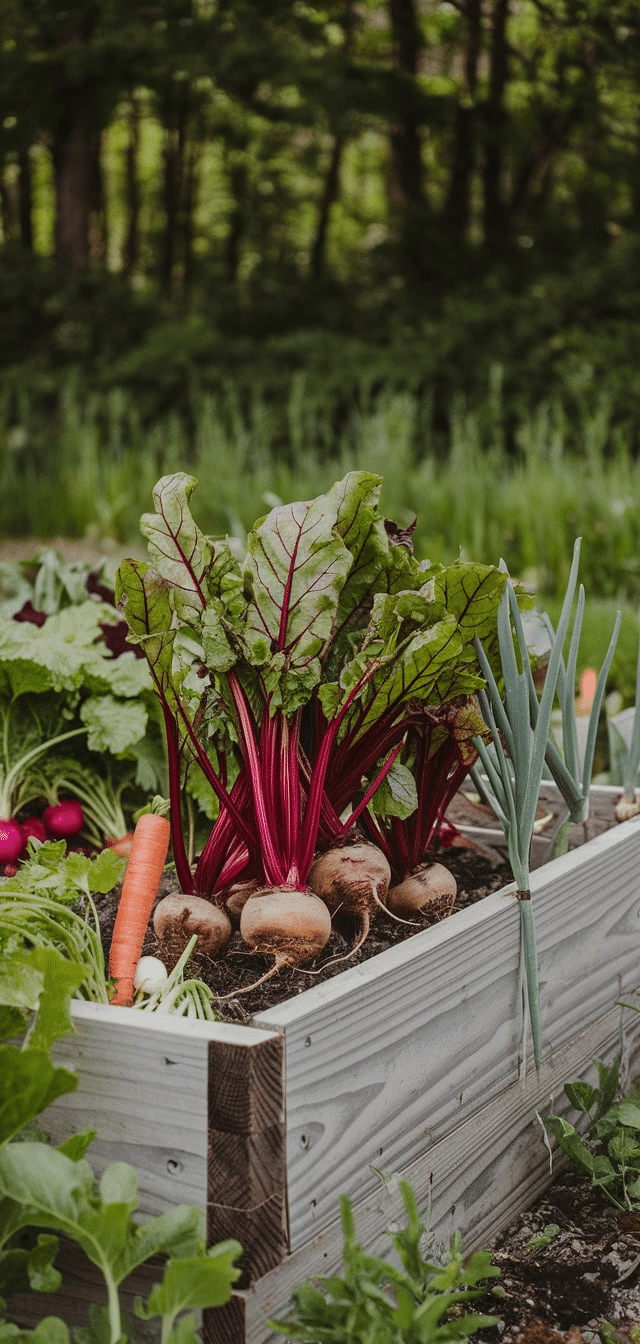
| Companion Plants | Benefits | Avoid Planting With |
|---|---|---|
| Lettuce | Companion harvest timing | Hyssop |
| Spinach | Breaks up compacted soil | |
| Peas | Improve flavor |
Tip: Plant radishes around slow-growers to utilize early space.
4. Beet Companion Planting Chart for Raised Beds
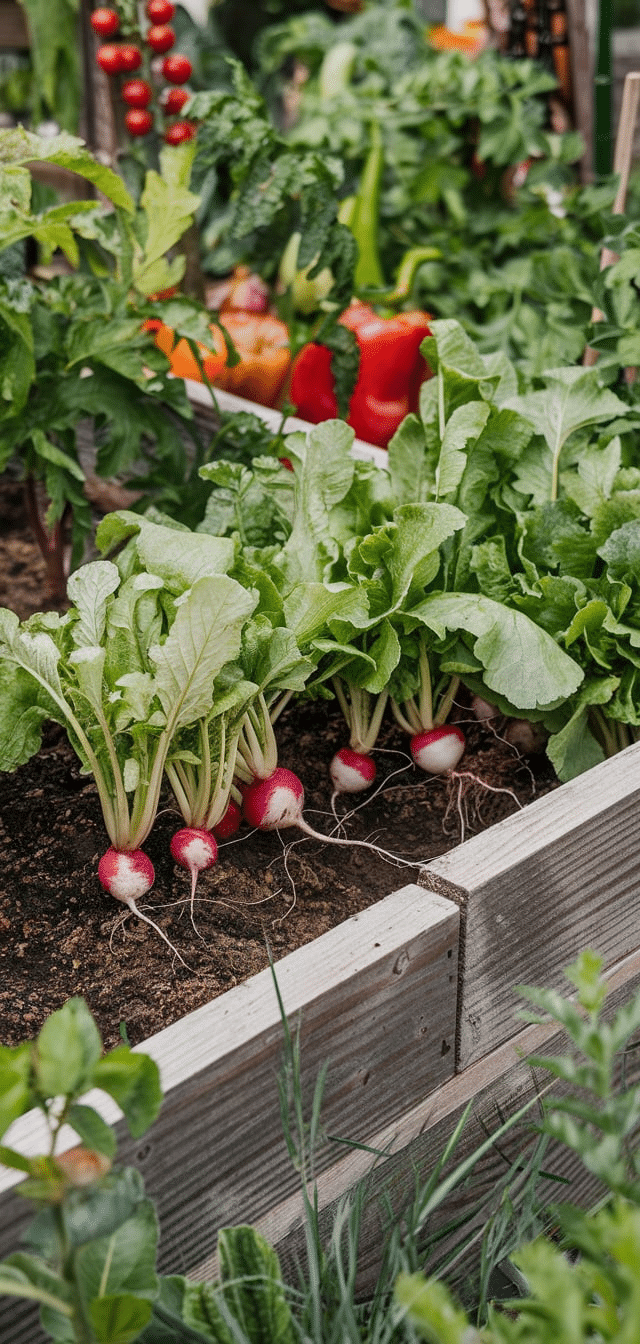
| Companion Plants | Benefits | Avoid Planting With |
|---|---|---|
| Onions | Deter aphids | Mustard |
| Lettuce | Doesn’t compete for nutrients | |
| Kohlrabi | Good soil depth match |
Tip: Use consistent watering to prevent woodiness in beets.
3. Cabbage Companion Planting Chart for Raised Beds
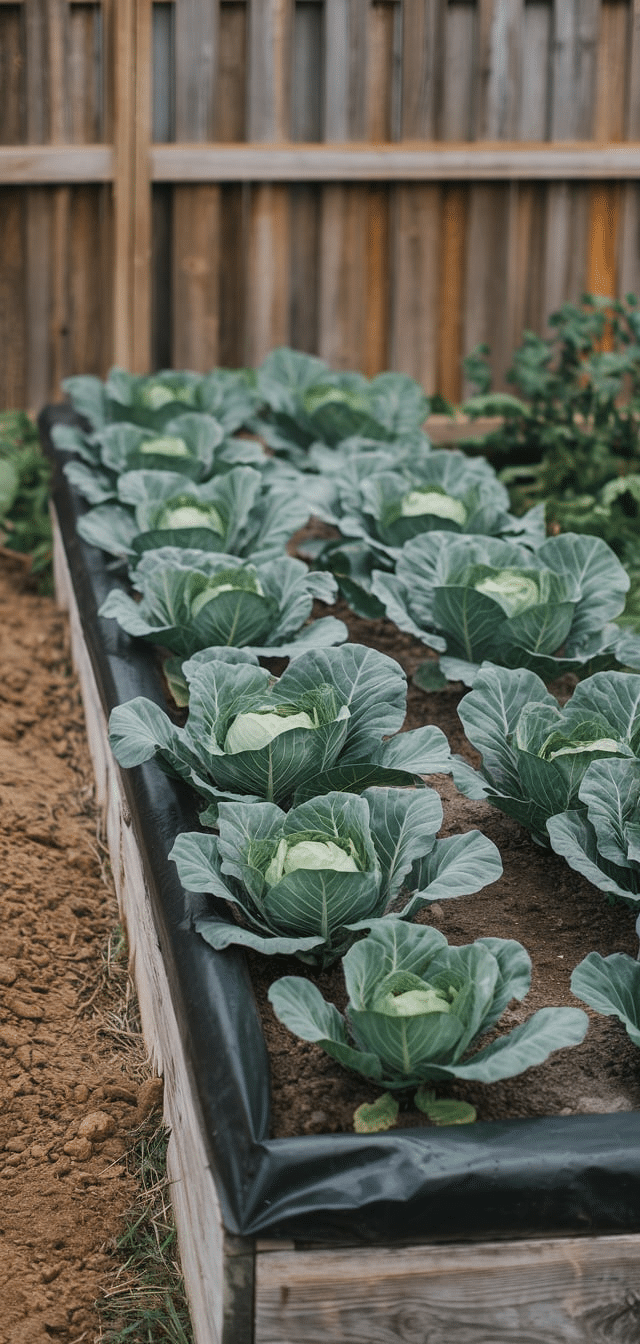
| Companion Plants | Benefits | Avoid Planting With |
|---|---|---|
| Dill | Deters cabbage worms | Tomatoes |
| Beets | Strong nutrient pairing | Strawberries |
| Celery | Enhances pest resistance |
Tip: Interplant with onions to naturally repel cabbage moths.
2. Celery Companion Planting Chart for Raised Beds
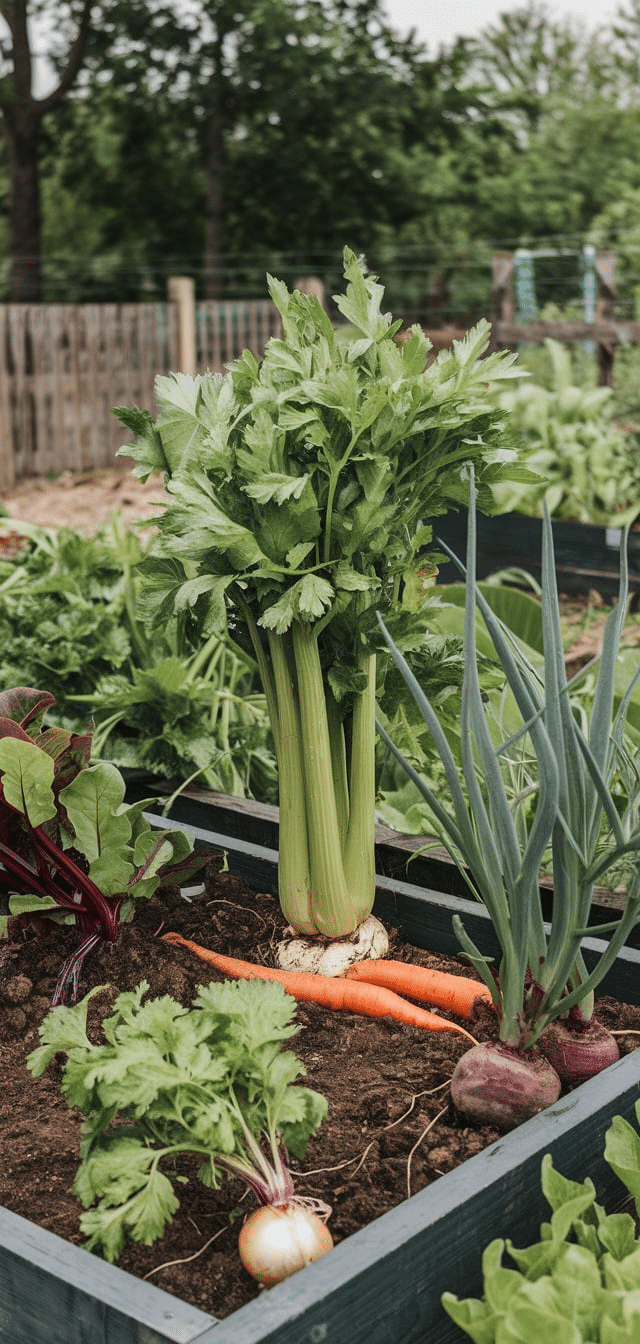
| Companion Plants | Benefits | Avoid Planting With |
|---|---|---|
| Leeks | Mask celery scent from pests | Carrots |
| Spinach | Shaded growth helps both crops | |
| Cabbage | Pairs well in raised beds |
Tip: Mulch heavily—celery requires consistent moisture.
1. Corn Companion Planting Chart for Raised Beds
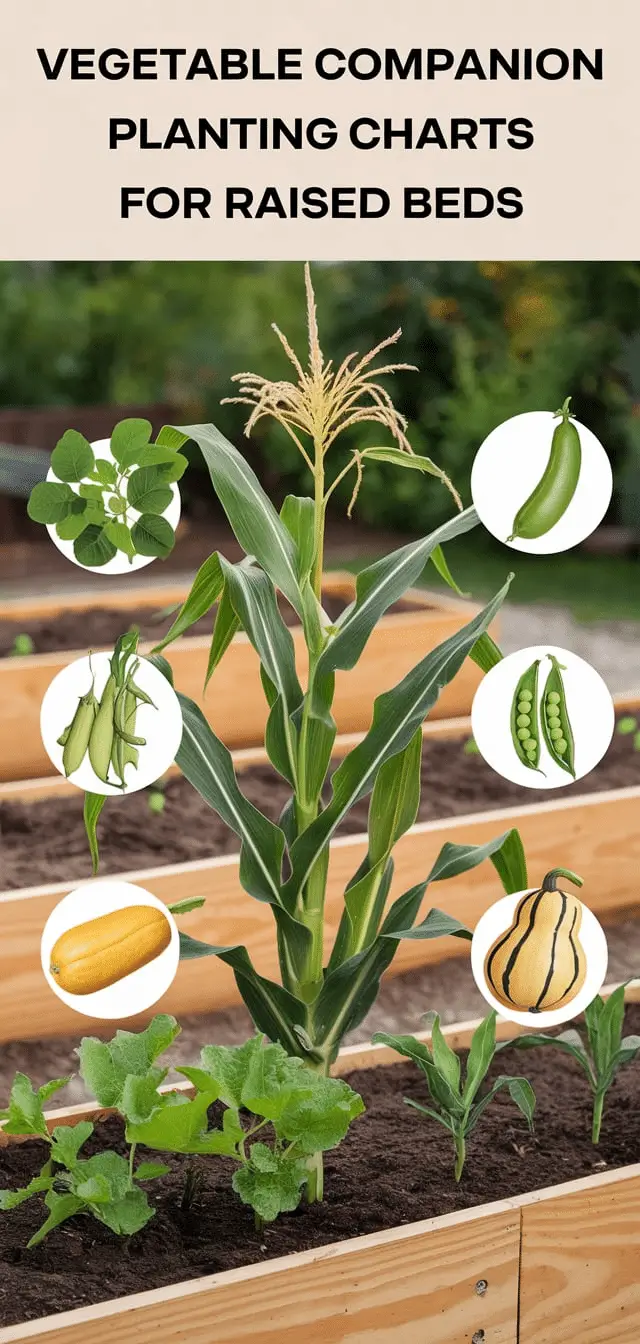
| Companion Plants | Benefits | Avoid Planting With |
|---|---|---|
| Beans | Fix nitrogen in the soil | Tomatoes |
| Squash | Mulches soil, deters pests | |
| Sunflowers | Windbreak and pest support |
Tip: Use the “Three Sisters” method: corn, beans, and squash together.
Conclusion
Raised bed gardening paired with intelligent companion planting provides a natural, productive, and visually dynamic solution for maximizing your food garden’s yield. Use the charts above to plan efficient and harmonious plant pairings for each season.





